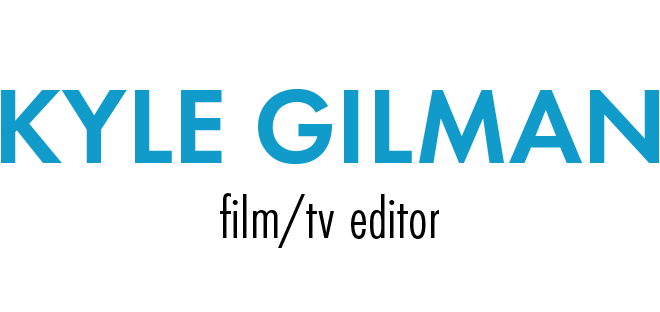Sound Editing Fay Grim
Against my better judgment, in addition to the picture editing (see earlier post) I agreed to do the sound editing for Fay Grim under Hal Hartley’s direction. Sound editing is not my first love. I have some ability with it, but it doesn’t get me as excited as picture editing. Usually it makes me bored and crazy. But I got a lot more money out of the whole thing as a result, so that was nice.
As we were editing the picture I kept thinking about how we would make the switch to sound editing. We had an old 1st generation MBox so we could get Pro Tools for $75. But there’s a built-in limitation in all hardware-based sound playback. You can only get X number of sound tracks out of the thing before you have to do a mixdown. In the case of the MBox, that’s 24 tracks. Since we were working with a lot of stereo effects and ambiences, that brought us down to about 14 or so distinct sounds. That’s not enough. I also had problems with stuttering sound and overloaded CPUs, which seemed strange considering we had a top-of-the-line (at the time) dual processor G5 and the MBox was several years old.
So I started looking at software-based solutions. I tried Soundtrack Pro, which came with Final Cut Studio. It seemed like a perfectly capable multitrack sound editor, but it had big problem. It doesn’t export OMFs. Soundtrack Pro was a dead end, unless you brought it back into Final Cut and exported the OMFs from there. More of a cul-de-sac I guess. I didn’t like that idea. It was too cumbersome. I like simple things.
The simplest thing I could think of was doing the sound editing in Final Cut Pro. I thought about it. And thought some more. And the only thing I could come up with that would make that worse than any audio-specific editing system is that it can only edit whole frames, you can’t make those real precise subframe edits. But frankly, that didn’t bother me one bit. And it never came up. And all the filtering and manipulation of sound would be done in the mix, so the only thing we needed to do was put the sounds on the right frames.
The big advantage to sound editing in FCP is that we never had to lock the picture. The picture editing could last for as long as the sound editing and there was no transferring back and forth between programs and no need to worry about making mistakes in the process. With a nice powerful processor, I could play the majority of our sounds without rendering because even if I had 72 tracks (I believe that was the final number) I was never playing 72 sounds at the same time. And when I did need to render, it took only a few seconds.
Finally I exported OMFs. I did two for each reel thanks to that pesky 2 GB file size limit, one with the first 36 tracks and one with the second 36. Then I combined the OMFs in Pro Tools and brought Pro Tools sessions to the mix.
I also spent a week making a program that would generate cue sheets from Final Cut Pro timeline. Hal likes cue sheets, and I was used to them from my student films which were mixed on dubbers like in the old days. The limit of my programming knowledge is using PHP to generate web pages, so I made a PHP script that could parse FCP XML files into cue sheets. It’s not perfect, and it only works in Safari (try printing it with Firefox and you’ll see). Once we got to the mix we realized it was completely useless because everyone could see the Pro Tools layout, and I had laid out the tracks in an intuitive way so we always knew where everything was. Anyway, if you have any need for FCP-generated cue sheets, let me know.

I would love to get your program to ouput FCP generated cue sheets.
Many thanks!
sharon
I’ve posted a distribution package for the cue sheet script